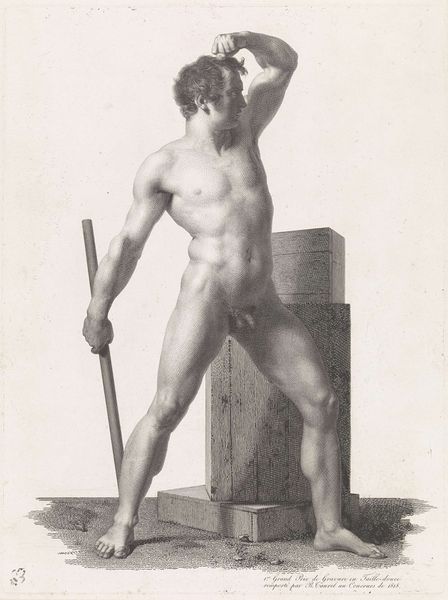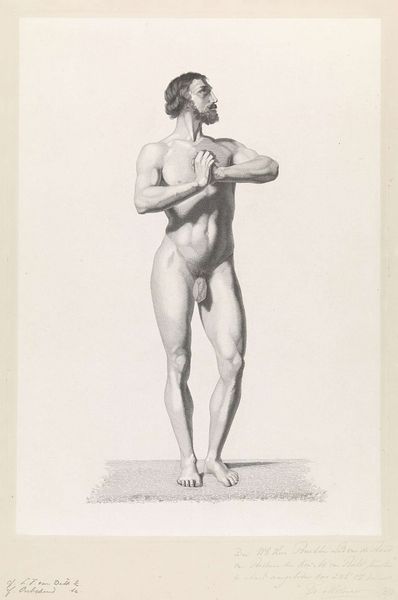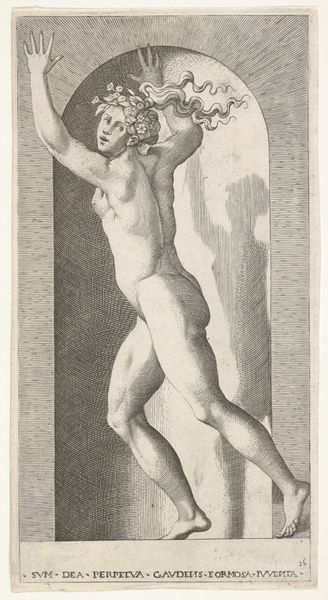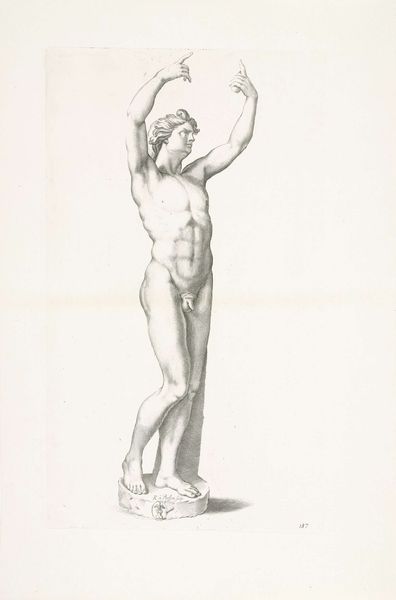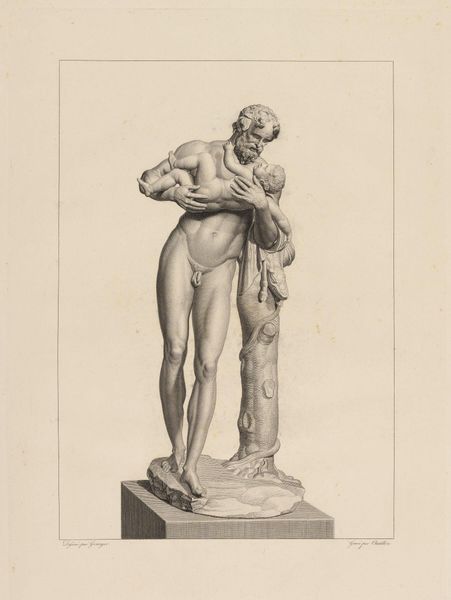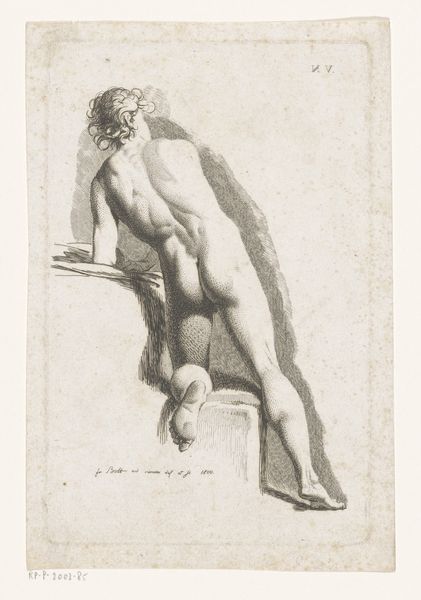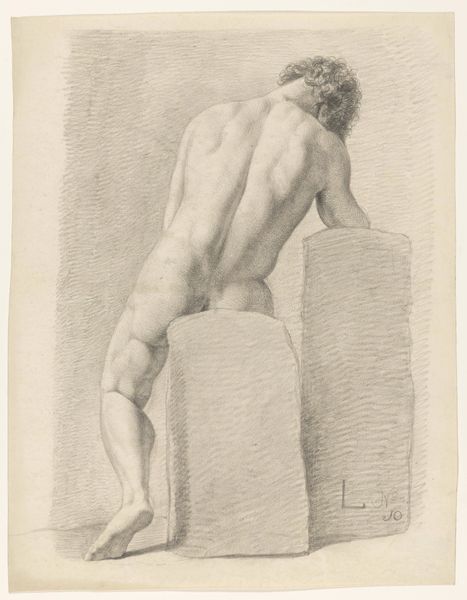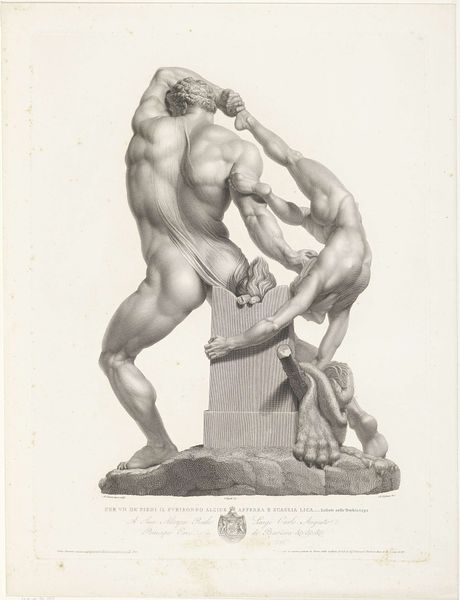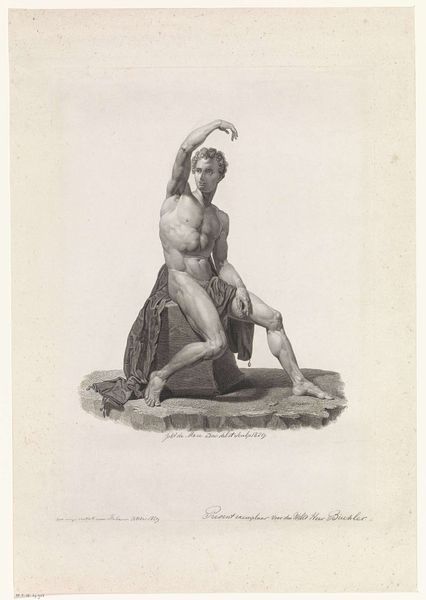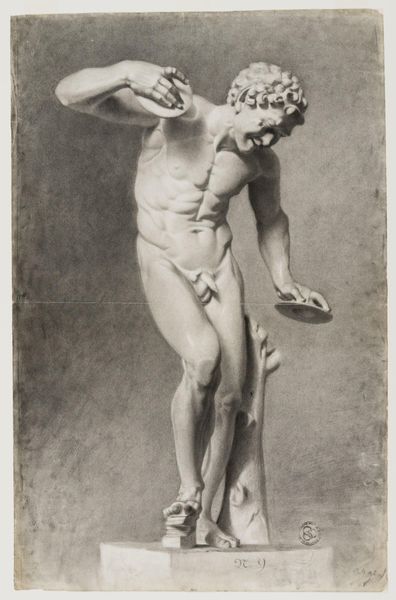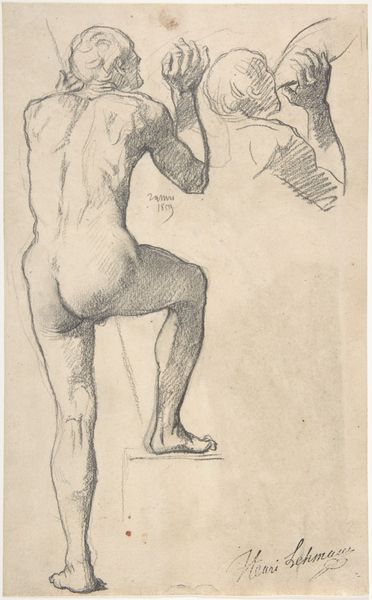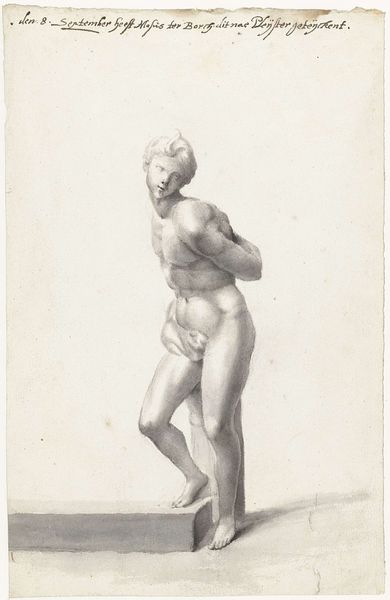
drawing, graphite, charcoal
#
drawing
#
charcoal drawing
#
figuration
#
charcoal art
#
pencil drawing
#
graphite
#
charcoal
#
academic-art
#
charcoal
#
nude
#
graphite
#
realism
Dimensions: height 410 mm, width 314 mm
Copyright: Rijks Museum: Open Domain
Curator: Let’s discuss this striking drawing titled "Studie van mannelijk naakt" created by Lubertus Teunis van Deth in 1842. Editor: My first thought is, "oppression." The pose is contorted, vulnerable, and seems to evoke some sense of burden. It makes me uneasy, actually. What’s going on? Curator: I read the gesture as classical. The figure seems suspended between earthly bonds and reaching for the divine—it calls to mind the torment and struggle for spiritual release echoed in countless religious works of the period. It is rendered using charcoal and graphite, two humble materials that contribute to the starkness of the image. Editor: Ah, humble materials indeed. You've got charcoal and graphite meeting flesh. This makes me think about the labour embedded in art education at the time, endless hours spent copying classical casts, refining technique through repetitive exercises. Even the act of posing must have been physically demanding, which speaks to the body as a material too. It is interesting how we end up considering the sitter only an idealised type here, obscuring all aspects of individual experience. Curator: I would also add, though, that his realism pushes beyond a mere technical exercise. His expression evokes the entire history of man seeking redemption. The wooden structure behind him – a cross-like shape – echoes themes of sacrifice and suffering. The figure isn't just "nude"; it's deliberately unadorned, raw, revealing a deeper emotional state. Editor: Yes, there’s a very staged feeling. The academic exercises produce this "raw" quality, by honing the skill while paradoxically suppressing emotion and physical reality. So it makes one wonder: What is it actually representing about 1842, its visual regimes, the control over bodies, gazes, or ways of making and meaning? Curator: I suppose the power lies in the intersection, doesn't it? The work’s symbolic depth, combined with its material honesty. This friction generates its enduring potency. Editor: Indeed, a potent demonstration of the intertwined lives of artist, model, and material that shape a work and an era.
Comments
No comments
Be the first to comment and join the conversation on the ultimate creative platform.
